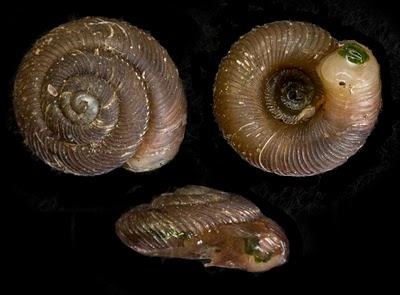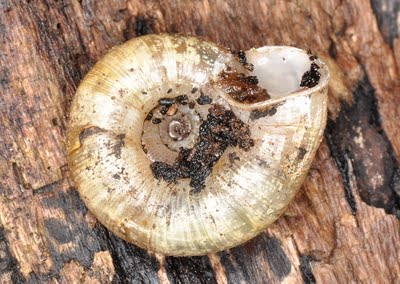Adaptation:
Discus catskillensis was once considered a sub species of Discus cronkhitei, since they look very similar. However, Discus catskillensis are flatter and more angular than Discus cronkhitei (Carnegie Museum of Natural History). For the adaptation of Discus catskillensis, Discus cronkhitei will also be referenced.

Photograph of Discus catskillensis
Shells (Kevin
Ripka).
A Discus catskillensis shell varies from tan to dark brown in color. Because this snail lives in areas that contain decomposed organic material such as, leaves and twigs, this color creates a flawless camouflage from its main predator, Haplotrema concavum. Haplotrema concavum (pictured below) is a grey-footed lance-tooth snail that preys on other air breathing snails (Global Species).To also protect itself from Haplotrema concavum, the Discus catskillensis has the ability to fit in small spaces which is provided by their flat and angular shell.

Photograph of Haplotrema concavum (Kevin
Ripka)
Discus catskillensis is found in areas where freezing temperatures are common, because of this they have found a way to survive the harsh weather.
| Temperature | Percent of Survival |
| -15oC | 76% |
| -17oC | 66% |
| -18oC | 55% |
| -19oC | 5% |
--This information is based on Discus cronkhitei (Riddle and Miller, 1988).--
Find out the stuff Discus catskillensis likes to eat!